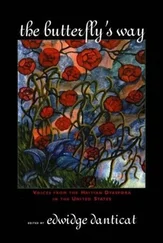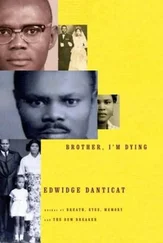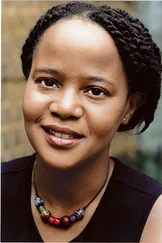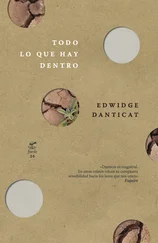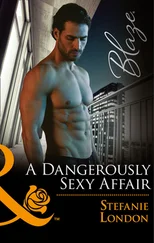I didn’t know of Daniel’s connection to Numa and Drouin the first time we met. And he did not know of my interest in them. In fact, we did not even speak to each other because he was busy taking photographs. I learned that he had been at the execution site only when I heard him speak at an exhibition of his photographs in New Paltz, New York, in the fall of 2006.
“I immediately wanted to be a photographer so that I could document Haitian history,” he’d said that day.
Elaborating during our conversation at my house, he added, “There were no recent or useful photographs in the Haitian history books I studied from when I was a boy. As far as those books were concerned, Haitian history ended in 1957, before François Papa Doc Duvalier came to power. In photography, history is something that happened ten minutes ago. Photography documents life, movement, but it also documents history and death.”
“Photography is an elegiac art” the novelist and essayist Susan Sontag writes in On Photography . “All photographs are memento mori ”. That is, they remind us, as Roland Barthes explains in Camera Luctda , that sooner or later the subject will no longer exist.
“To take a photograph,” Sontag continues, “is to participate in another person’s (or thing’s) mortality, vulnerability, mutability. Precisely by slicing out this moment and freezing it, all photographs testify to time’s relentless melt.”
Daniel Morel has been trying to document Haiti’s relentless melt ever since he saw Marcel Numa and Louis Drouin die. His instantly recognizable images, distributed for fifteen years by wire news services to publications all over the world, are raw and startling, urgent and frightening, like screams rising from an unending nightmare. He does not spare his subjects or his viewers any more than life would spare them. He is a witness, but barely there. You almost have a feeling that the photographs take themselves, because they document acts that you’d expect people to take part in only when others are not around: biting another’s dismembered finger, setting a pile of men on fire.
Children in quiet distress-as Daniel and many of the other youngsters may have been while watching Numa and Drouin die-often appear in his oeuvre. They are carrying heavy objects, cement blocks, buckets. They are dwarfed by mountains of trash or packed in tiny classrooms. They are cradling the bloody heads of their dying friends on the street. When among the skeletal dead, they are nearly falling off the edge of crowded gurneys, a limb hanging down, as if reaching for the earth in which no one can afford to properly bury them.
During the Duvalier dictatorship, Morel, now a gray-haired and bearded soft-spoken middle-aged man, explains, no one was allowed to walk around with a camera in front of Haiti’s presidential palace. If you did, you risked being mistaken for a spy and getting shot. Pictures, except when used for fright and propaganda, were taken at home or inside professional portrait studios, where people sat and posed and tried to look either pensive or satisfied. He wanted to reclaim the power of propaganda photos from the state and return it to the subjects, but he could not do that before leaving Haiti at seventeen.
His first photography assignment was in college, in Hawaii, where he photographed a cooking class. For the second, he photographed former president Jimmy Carter while Carter was visiting Hawaii. Surrounded by an army of photographers, Daniel was seduced by the clatter of all the shutters and flashes around him, what Roland Barthes calls “the living sound” of a photograph and what Daniel Morel refers to as “the klak klak klak klak” of it all.
The nonpersonal photographic images he often has in mind while working are of the death of Marcel Numa and Louis Drouin, the assassination of John F. Kennedy, and Jack Ruby’s televised shooting of Lee Harvey Oswald, which he saw, as a boy, in graphic stills in the pages of Paris Match magazine. He would later capture similar images in his work, leading some to criticize him for his penchant for showing only the harshest, most violent side of Haitian life.
“A lot of people see my pictures,” he says. “They tell me ‘you make the country look bad.’ People sometimes say my photos are too negative. They’re shocked by them, but that’s exactly the reaction I want to get from people. I am not trashing Haiti or denigrating it. I am just showing people the way things are because maybe if they see it with their own eyes, they’ll do something to change the situation.”
In 1980, Daniel returned to Haiti from Hawaii. He traveled across the Haitian countryside photographing country weddings and wakes. He began taking news-related photographs after the end of the Duvalier dictatorship in 1986, when the streets were filled with the corpses of the Duvaliers’ former henchmen. He worked for several Haitian newspapers and took the occasional freelance assignment from foreign newspapers until he was doing most of his work for wire news services.
In 2004, after the second departure of President Jean-Bertrand Aristide and a personal tragedy in which his wife was brutally mauled to death by a guard dog, he left Haiti and moved back to the United States, where he has been struggling to make a living as a photographer. Now, as an older immigrant, he finds it much harder to rebuild his life and career.
“I have no country now” he says. “I can’t live in Haiti and I can’t live in the U.S. In Haiti they called me jounalis la, atis la , the journalist, the artist,” he says, “Here, I feel like I have little value.”
He does not feel sorry for himself. He has seen too many horrors for that. If anything, he would like to document this stage in his life, frame by frame, day by day.
Eight months before we met in Miami, he was beginning to lose his balance, and then fell and hit his head so hard that he cannot remember where he hit it. He suffered a concussion and some bleeding in the brain, and when he went to the hospital for an MRI, a benign tumor was found in his brain. Before he could have the surgery, he had to be given plasma and spent nineteen days in a New England hospital, and every day he photographed the daylong frost and striking winter sunrise and sunset outside his hospital room window. Sometimes a sparrow would show up in the window and peek in at him, and he would be convinced that the sparrow was the spirit of his dead wife. Though he had been unable to bring himself to photograph his wife’s body after she died, he photographed the sparrow, seeing in this bird a chance to salvage some beauty out of horrible tragedy. During his stay in the hospital, he photographed the staff and all his procedures. He used overhead mirrors to photograph himself photographing himself. Before his brain surgery, he asked the surgeons to photograph his open skull and exposed brain, a picture of which he later showed me.
What was it like, I asked him, turning the camera on himself, to document his own mortality?
“I was joyful,” he said. “I was happy. Even if these were my last pictures, I would have died with the camera in my hand. I have documented others. I couldn’t die without documenting myself.”
As he recovered from the surgery, though, he began thinking of his archive of twenty-five years’ worth of pictures, each image, he was happy to discover, still imprinted on his brain, just as they’d been before the surgery. He is thinking, however, of concentrating now on other types of images.
“I’d like to take pictures with less conflict and tension, less provocative pictures,” he says, “I’d like to show the beauty of Haiti because when I lived there I saw as much beauty as ugliness. I smelled as much trash as the great smell of bread baking in my father’s bakery in downtown Port-au-Prince.”
Читать дальше


